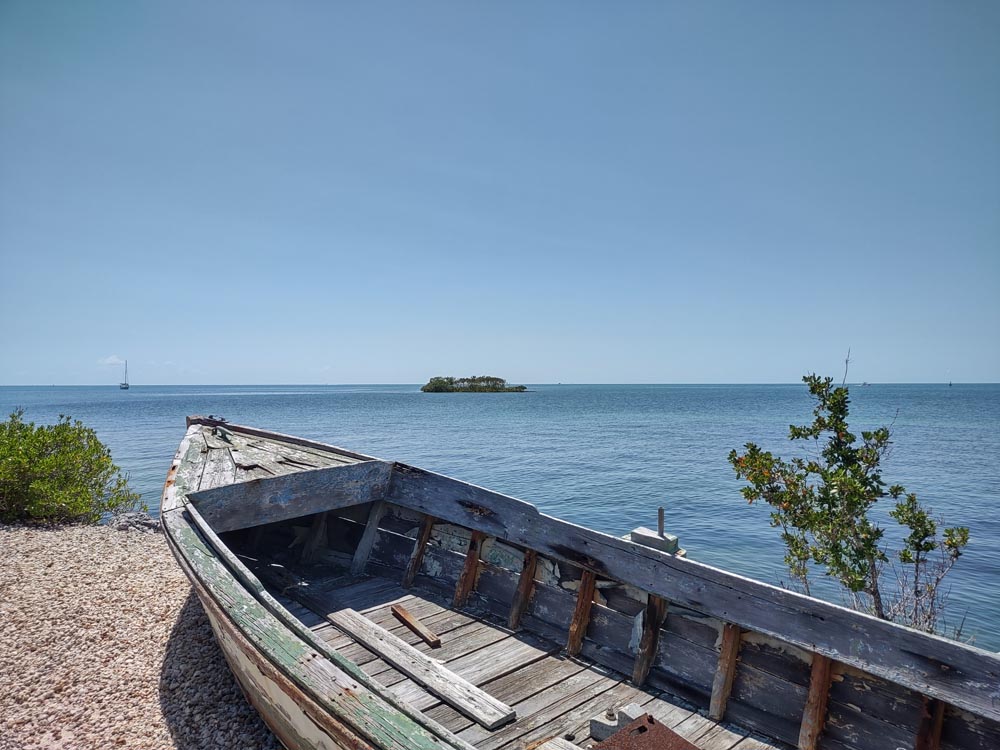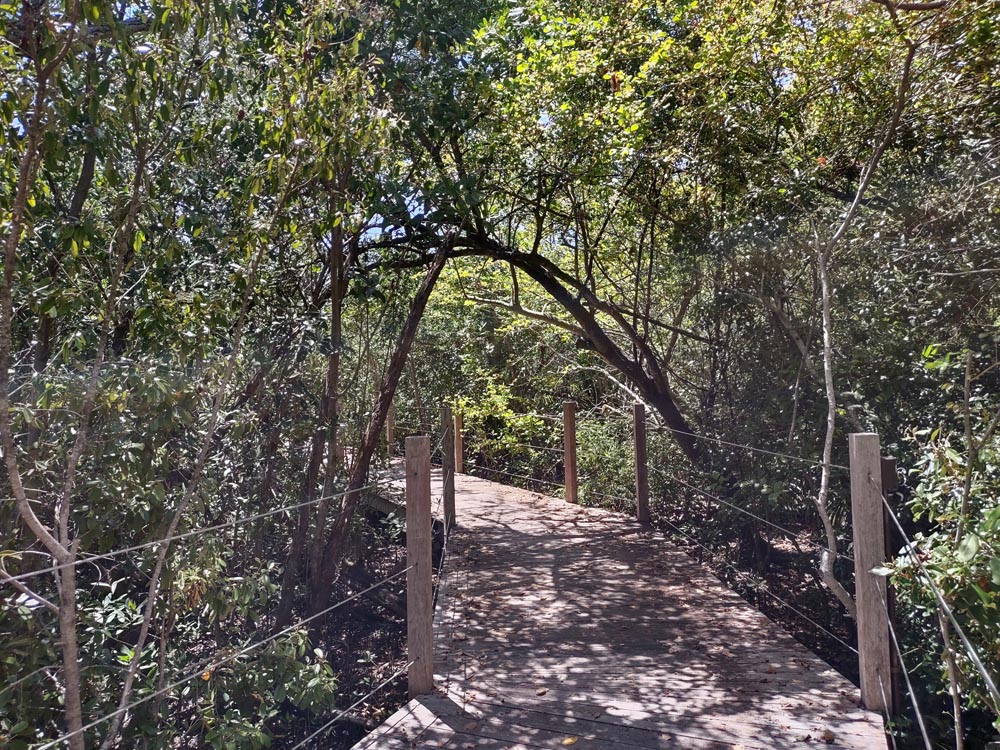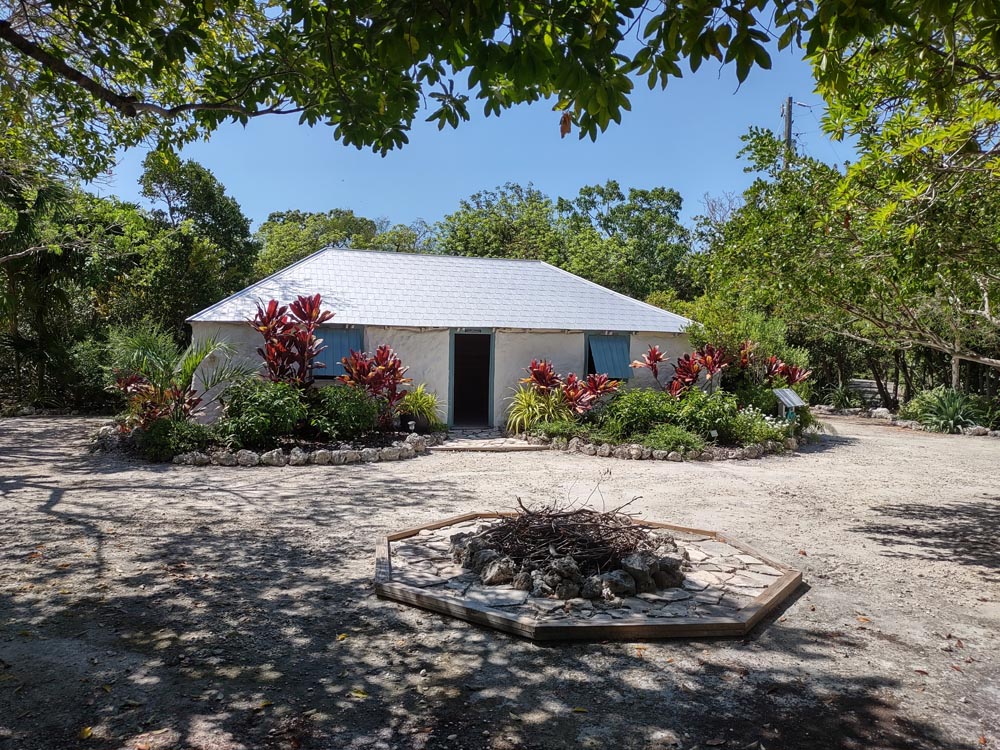
Crane Point Hammock is a densely wooded 63-acre patch of land in the middle of the Florida Keys. Located in Marathon Florida, Crane Point Hammock is owned by a nonprofit organization that rescued the property from being a strip mall and is dedicated to preserving the land as it was in the early 1900s. If you ever wanted to see what the Keys were like before any commercial development, then take a few hours to tour this spectacular estate.
Included on the property is a museum, nature trails, the oldest house in Marathon, and a stylish mid-century home located on the water. The surrounding hammock features one of the few remaining thatch palm hammocks, as well as the Key Vaca Racoon! Another bonus, bring your dog because Rusty is welcome at Crane Point Hammock.
Museum of Natural History
The museum is your starting point, you’ll go through hand-crafted copper doors featuring scenes of sea life of the Florida Keys. Inside you’ll learn about how people lived in the Keys throughout history.
There’s a 600-year-old canoe, pirate ship remnants, and informative exhibits about early explorers, pioneers, and the people who built the Florida Keys to get them to where they are today.
Just so you don’t forget to pick up that gator key chain for the folks back home, the gift shop is conveniently located just outside the museum.
Nature Trails at Crane Point Hammock
The main loop is about 1 1/2 miles in length and it takes you from the museum to The Point and back. Along the way you’ll go through palm tree and mangrove forests that hold a variety of endangered flora and fauna. There’s a boardwalk that will take you to fantastic views of the Gulf of Mexico. Eventually you’ll end up at the Crane House, a mid-century house that was built for Frances and Mary Crane.

Just north of the house at the end of the trail is The Point. You can hang out, feed the fish, and take in the views of Florida Bay. There is also a kayak and snorkel tour that leaves from The Point. It’s from 9-4 and reservations are required. The cost is $59.95, and you’ll go to Rachel Key and Bud Island.
After you’re done here, head on over to Pigeon Key! Another historical island in Marathon.
After you’ve had your fill of The Point, head on over to the house and dip your feet into the tidal pool at the back of the house and get a fish pedicure. Mexican resorts charge tens of dollars for this, at Crane Point Hammock, it’s included in the price of admission.
Once you’ve got your feet all spiffed up, the next stop on the nature trail is the Adderly House. George Adderly built his house from 1904 to 1906 and it’s currently the oldest house in Monroe County outside of Key West.
After the Adderly House, the trail takes you back to the museum. Along the way there’s a boardwalk that you can walk on over the wetland ponds. Once you get back to the museum, if you stay on the trail, it will take you to the Butterfly Conservatory and the Wild Bird Center.
The Wild Bird Center has rehabilitated over 16,000! wild birds and released them. You can see their current patients, as well as Rita, the resident Bald Eagle. Rita can’t survive in the wild on her own, so she spends her days enjoying Marathon Key.
The Adderly House at Crane Point Hammock

George Adderly, who originally hailed from the Bahamas, moved to the Keys and became a naturalized citizen in 1891. In 1903 he bought 32 acres in what is now known as Crane Point Hammock for $100.
Mr. Adderly, along with others from Bahama lived in the little community known as Adderly Town and worked as spongers and charcoal burners. The men would be gone for days and weeks at a time collecting sponges. When they were at home, they would burn charcoal in their kilns to sell at Key West, along with their sponges. The wives were responsible for tending to the vegetable gardens and fruit trees, as well as taking care of chickens and other animals.
There were about 10 homes in this community, and the only one left standing is George Adderly’s house. A rectangular structure that measures 30’x21′ with two doors and eight windows. It is now completely renovated to what it would have been like in 1906 and is on the National Register of Historic Places.
George and his wife Olivia lived on the property until they sold it to the Crane’s in 1949.
If you’re heading to Key West, check out Dry Tortugas National Park while you are there!
The Crane House
Frances and Mary Crane, originally from Massachusetts, bought their Marathon property in 1949. The Cranes cleared the hammock where they wanted roads and bridges. They had Miami architect Wall Snyder design and build their house. The house itself is a great example of mid-century architecture, and it was one of the first elevated houses in the Keys.
Built in 1954, the Crane House has a great view of the Florida Bay. The house isn’t open for tours, but it can be rented for events. You can still walk around the outside of the house and there is a fantastic open patio to let you get a feel for what it was like to live there.

The Cranes were conservationists and wanted to preserve the hammocks around their home, which they owned until the late 70s. They sold it to the non-profit Florida Keys Land Trust who still own it today.
Take a couple of hours out of your Florida Keys trip to enjoy this piece of history.
Crane Point Hammock is open Monday to Saturday 9 – 5 and on Sunday noon to 5. Admission is $14.95/12.95/9.95 for general admission/military and seniors/children 5-13.



Recent Comments